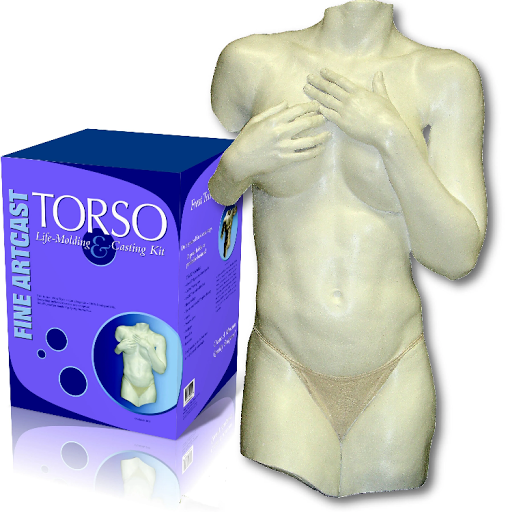Use too few plaster of Paris bandages for making a shell mold and you will be left with a distorted mold on your hands. Tips on how to calculate the requisite amount of rolls will prove helpful.
Plaster of Paris bandages are a versatile accessory when making molds, and especially body molds. The most common use of plaster bandages is for making shell molds. Also known as mother molds, they provide rigid support so that flexible molds made of alginate, latex rubber and silicone rubber can retain their shape. The shell mold is made over the original mold so that it can house the mold and ease the casting process.
Apart from this, the bandages are also directly used to make form molds like the torso, belly and legs in body casting. They are also useful in mask making.
This brings us to the question – how many plaster bandages will an artist need for making a shell mold or even a form mold? Keeping sufficient rolls of bandages handy is imperative. In case you fall short during the mold making process, the mold is most likely to distort and collapse into a useless mess.
This is especially important as the bandages are built up in overlapping layers to ensure that the mold become sturdy enough after drying. Therefore, eyeball estimates by newbies can easily go haywire.
A simple rule of thumb is that the bigger the mold, the thicker should be the shell mold to ensure that it does not distort during the casting. Following is an estimate of the number of layers of plaster bandages required during life casting:
- Face mold - 4 layers
- Head mold - 5 layers
- Half torso - 5 layers
- Full torso – 6 to 8 layers
Now, a standard 5-inch roll of 5 yards plaster bandage yields around 900 square inches of bandage therefore, a single roll of plaster bandage will easily suffice for a typical face mold. A head mold will require 4 to 5 rolls and half torsos can be covered with 4 rolls. Full torso will take about 5 to 6 rolls for proper and thick coverage.
Environmolds (https://www.artmolds.com) offers a broad range of top quality plaster of Paris bandages. The creamy and smooth PopArt Plaster Bandages are available in 5 inches, 8 inches and 12 inches by 5 yards length. These are superior quality quick-setting bandages that are formulated to wet out creamy with a thick plaster consistency. They set quickly within 5-minutes itself.
Then there is the ArtBands Plaster Of Paris gauze bandages (5 inches * 5 yards) with a modern formulation that produces a consistent fast-setting plaster coat that adheres to the gauze cloth uniformly. It yields a smooth, creamy surface, is fast setting, resists delamination and gives excellent strength. The Gypsona Plaster Bandage is another premium bandage (6 inches * 5 yards) that has been the first choice of mold makers and life casting artists for over a decade.












